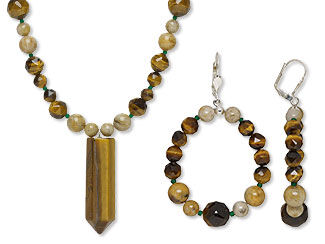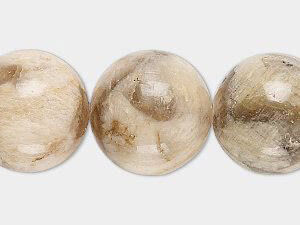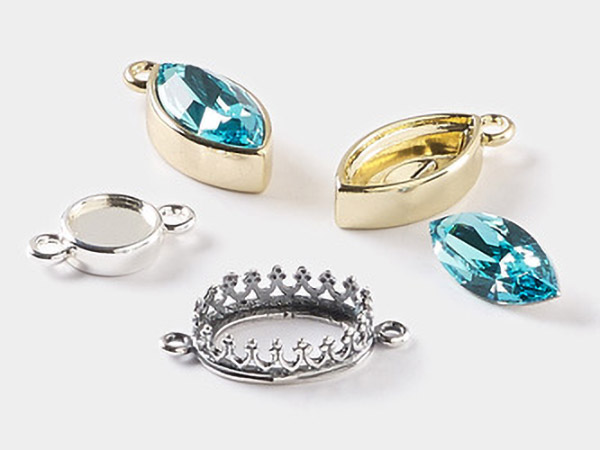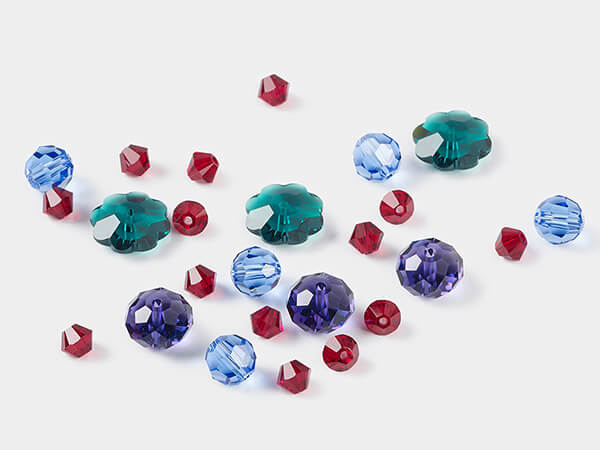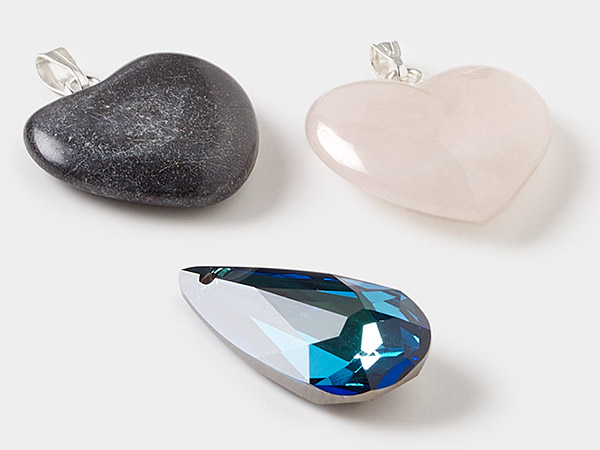Feldspar Meaning and Properties
Feldspar History
Feldspar is a group of minerals containing potassium, sodium, calcium and aluminum silicates. Feldspar was given its name by Johan Gottschalk Wallerius in 1747. The name feldspar is derived from German "feld," meaning "field" because some early specimens were found in fields and "spar, " a geological term for non-metallic minerals with a vitreous luster and good cleavage.
Individual gemstones with the feldspar name now in the marketplace include:
- Grey feldspar is a striking blend of grey and tan shades with black inclusions
- Pink feldspar has distinct, marbled patterns of mauve, cream, grey and black tones
- Graphic feldspar boasts a marbled appearance with varied black, grey and occasional brown translucent inclusions set in creamy tan stone
- Brown feldspar has a marbled surface with tan and brown tones
- Black spotted feldspar has a grey surface with black spots
Feldspar is an important and common raw material used to produce ceramics and geopolymers. Feldspar is also often used as an anti-caking agent in powdered forms of non-dairy creamer. Feldspar is an important ingredient in the manufacturing of glass. The alkali content in feldspar acts as a flux, lowering the glass batch melting temperature and reducing production costs.
What are the Metaphysical Properties of Feldspar?
Feldspar is believed by metaphysical adherents to be a gemstone of creativity. Feldspar meaning is linked to finding unconventional and exciting ways to achieve goals by stimulating creative thinking. Feldspar is said to increase self-respect, self-esteem and self-awareness.
Feldspar is believed to help to align our chakras, subtle bodies and meridians and is good for astral travel. Feldspar meaning associated with the astrological sign of Aquarius.
What is Feldspar Made From?
Feldspar comprises almost 60% of the Earth's crust, making feldspar the most common mineral. Feldspar contains aluminum silicates with potassium, sodium, calcium and barium.
Feldspar group consists of mainly 3 mineral species:
- Microcline feldspar - a mineral species with chemical composition of KAlSi2O8. Amazonite is the variety under this mineral species.
- Orthoclase feldspar - mineral species with chemical composition of KAlSi3O8. Moonstone (white, gray, peach etc.) is the main variety under this mineral species.
- Plagioclase feldspar - mineral species with chemical composition NaAlSi3O8 and CaAl2Si2O8). Sunstone, labradorite and rainbow moonstone are main varieties under this mineral species.
Individual gemstones with the feldspar name, such as grey feldspar, come under the feldspar subgroup—or mineral species—microcline feldspar. Amazonite is another gemstone from the feldspar microcline subgroup. And, like Amazonite, gemstones with the feldspar name from the microcline species are found in Brazil, Colorado and Virginia in the United States, Australia and Madagascar.
- Mineral Information: Tektosilicate, microcline (feldspar group)
- Chemical Composition: KAlSi2O8
- Color: Colorless, yellow, green, blue-green, orange, red-brown, dark gray, gray-black.
- Hardness: 6 to 6-1/2 (Mohs)
- Specific Gravity: 2.56 - 2.75
- Refractive Index: 1.518 - 1.570
How Do You Clean Feldspar?
Feldspar gemstones of the microcline species are sensitive to chemicals, abrasives, heat, acids and ammonia. Never use a steamer, hot water or ultrasonic cleaners with these feldspar gemstones. Use mild soap and room temperature tap water with a soft cloth to retain the luster of the gemstone.
Feldspar FAQ
Q: What gives feldspar its unique shimmer or glow?
A: Feldspar is a varied mineral. Here are some of the optical features that could potentially be found in feldspar:
- Labradorescence: a scattering of light waves caused by inclusions, resulting in rainbow hues
- Adularescence: a scattering of light waves caused by mineral layering within the feldspar, causing a milky translucence
- Fluorescence: the ability to glow under ultraviolet light due to UV energy being re-emitted as visible light
- Phosphorescence: the ability to glow after a light source has been removed; caused by inclusions trapping electrons temporarily in a higher energy state
To learn more about the optical features of gemstones, read “Special Effects in Jewelry-Making Materials.”
Q: What color varieties are available in feldspar beads?
A: Feldspar is available in a wide variety of colors—the entire spectrum of the rainbow as well as black, grey, brown and colorless.
Q: Is feldspar the largest group of minerals in Earth's crust?
A: Yes. With almost 60% of the Earth’s crust being feldspar, it is the most common mineral group therein.
Q: Does feldspar scratch or chip?
A: Because of its perfect cleavage, feldspar is prone to chipping. This beautiful stone is best suited for earrings, necklaces and brooches, where the risk of impact is minimized.
Designing with Feldspar
The range of feldspar gemstone colors (or no color) offers a galaxy of design options. Grey feldspar with its neutral color can be used as a spacer, or it can be paired with sympathetic colors such as blue. The marbled patterns of mauve, cream, grey and black from pink feldspar work especially well with tan, black, or brown hues and well as deep greens. Graphic feldspar's marbled black, grey and brown set in creamy tan also work well with earth tones and shades of green.
A Design Inspiration to Get You Started
Shop for Feldspar
**Please note that all metaphysical or healing properties listed are collected from various sources. This information is offered as a service and not meant to treat medical conditions. Fire Mountain Gems and Beads® does not guarantee the validity of any of these statements.
How did you like this resource? Your feedback helps us provide resources that matter to you most.
Copyright Permissions
All works of authorship (articles, videos, tutorials and other creative works) are from the Fire Mountain Gems and Beads® Collection, and permission to copy is granted for non-commercial educational purposes only. All other reproduction requires written permission. For more information, please email copyrightpermission@firemtn.com.

